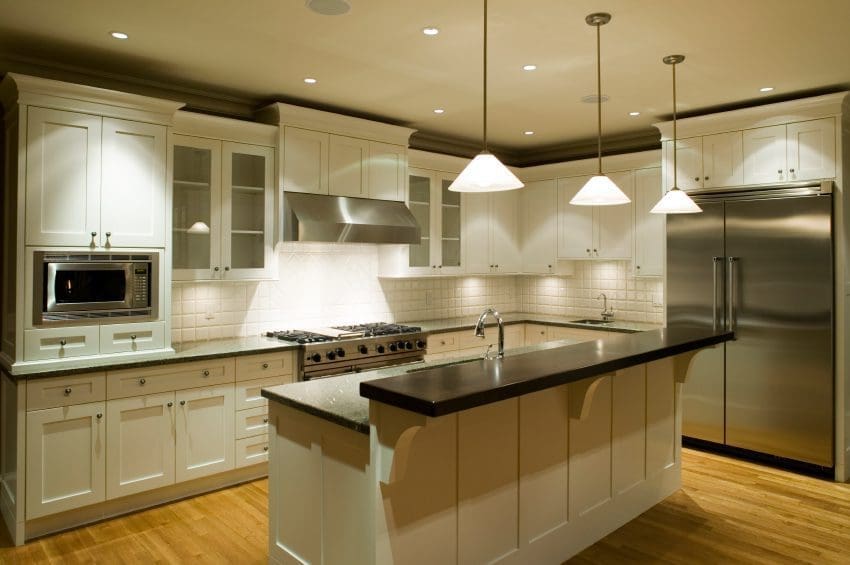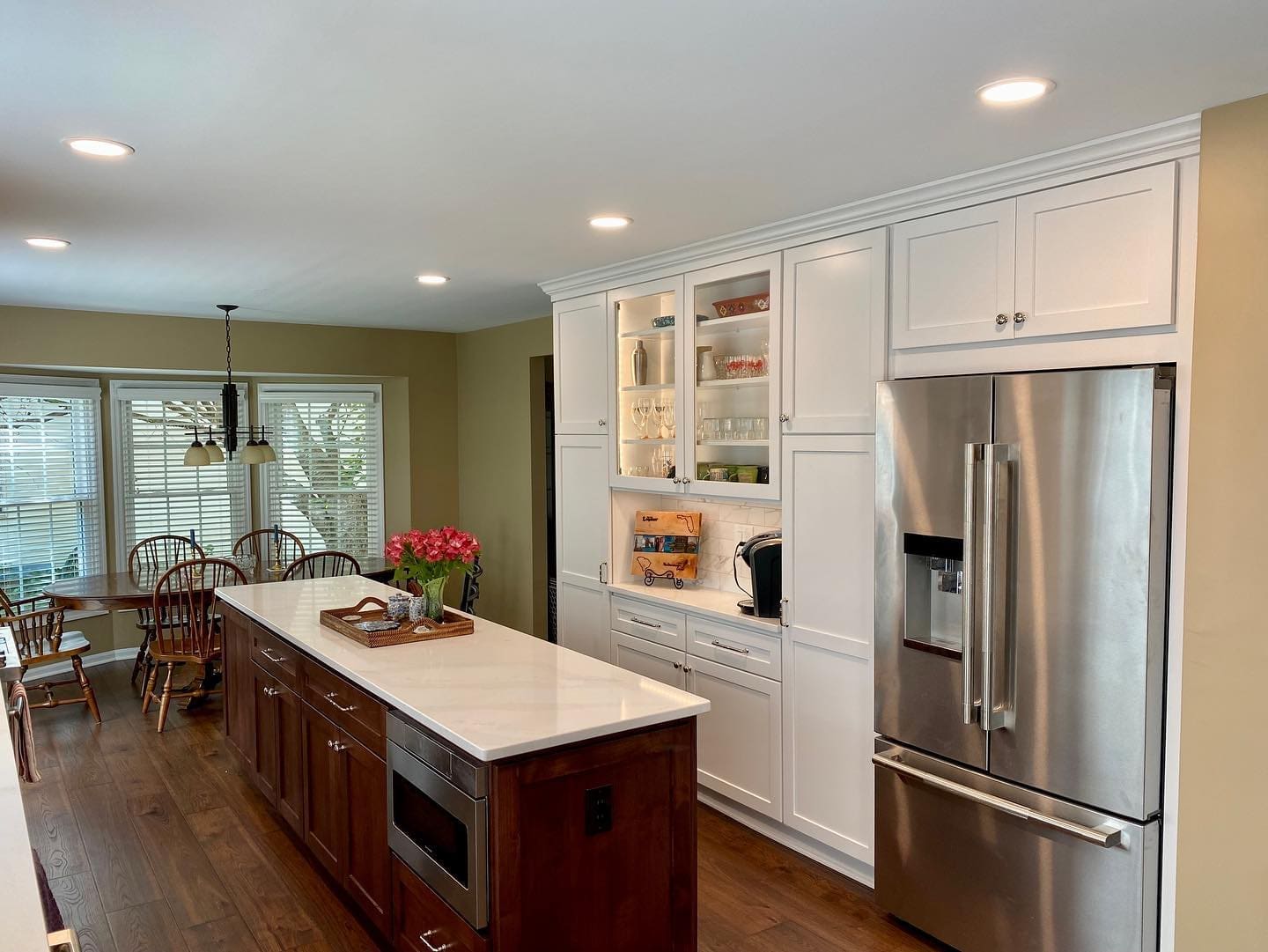 The Brightest Trend in Washington D.C. Kitchens
The Brightest Trend in Washington D.C. Kitchens
Consistent with the trends of the past decade, or so, the Washington D.C. design community is still embracing the importance of natural light into a kitchen area. Bright, captivating windows–dressed in crisp natural greens and yellows–have held the attention of the homeowner and the designer for quite some time. The kitchen became the ultimate ‘feel-good’ room in daytime and on sun-lit days. Kitchens and adjunct breakfast nooks are designed to soak every drop of sun from the outdoors and bring it all inside. This is a comforting, welcoming element in the best of all kitchens. However, although this is a vital mandate in the kitchen area, there’s only a portion of the day that will produce the glow of sunlight; and there are also days that produce no sunlight at all. So, while not neglecting the emotional need of natural light, Washington D.C. designers are keen to introduce artificial lighting sources for those days and times of day when the sun is complacently retired.
There was a time when the decorator and designer did their level-best to fashion and scheme artificial lighting as a means to emulate the shade, course and flow of natural light. In such attempts, the effect quickly became sterile because, as you would assume, there’s nothing like the real thing, right? With that in mind, and represented in today’s trends, lighting design is being taken into its own direction; and a direction more suitable to its task.
Structural Kitchen Elements Demanding Special Treatments
Take a look at what seems to be trending in Washington D.C. kitchens today; and, actually, for kitchens around the world. There are some very sensible, yet dramatic, structural components that are becoming the new standard of the modern kitchen. In these structural manifestations there comes, not only, necessity of proprietary lighting treatments but clear opportunities to draw attention to some of these special structural features.
The first place to look for such changes is ‘up’. You’ll notice that there’s a strong trend in the design community that seeks to draft a more dramatic ceiling line. Flat, white ceilings are clearly passé these days and have given way to greater expressions within the style of ‘can’ or ‘tray’ ceilings. These types of ceilings, because they’re quite dramatic, lend themselves–or demand–a more exclusionary lighting treatment. The fixtures are not central to the ceiling but, instead, designed to highlight certain stations within the kitchen or simply highlight the drama of the ceiling itself!
The kitchen island is steadily becoming more significantly and, quite frankly, more of an expanse within modern Washington D.C. kitchens. The island may accommodate a sink, separate cooktop, cutting area, modest seating area, to name a few; and, of course, these stations may all be incorporated in the same island. This presents a bit of a lighting challenge because all these activities require their own degree of lighting efficiency and demand. Quite often, as you’d imagine, a main fixture may exist with the support of smaller, more dedicated fixtures to satisfy the needs; and, as you’d imagine, each fixture will require a different control.
With the growing popularity of open shelving in today’s kitchens, the need and necessity to draw attention to such a notable feature is administered by two different lighting options. The more subtle means of lighting these spaces is by the use of small, hidden lamps which offer a ‘gallery’ lighting effect.
The other means to address the lighting is by ‘chains’ of small LED lights, which can be quite attractive when done well and modestly.
The Fashion Statement in Washington D.C. Kitchen Lighting
It seems that most of us look at lighting and, in particular, kitchen lighting as really a matter of utility and function rather than of particular design statement. Sure, we want the lighting fixtures to be supportive of all the other design elements that are going on in the space but that seems to be the issue: a supportive role.
Contrary to the ‘establishment’, relegating lighting to the supporting cast of a host of other more ‘important’ elements, the kitchen lighting fixture is now making its own statement. The obvious trend here is that the dominant, central lighting fixtures are grand and expressive. They are possessing metals or mixed metals that draw a spectator’s attention, whether the light is ‘on’ or ‘off’. They are a central figure in a kitchen which is becoming a very involved and active visual of somewhat competing components and elements. The idea here is to create a space that is, above all else, functional; but will also possess ‘statements’ which draw the attention of anyone or everyone who enters. It’s a bit like a museum concept, with one element not really being subordinate to another while occupying the same space; and, without question, working so well together!






